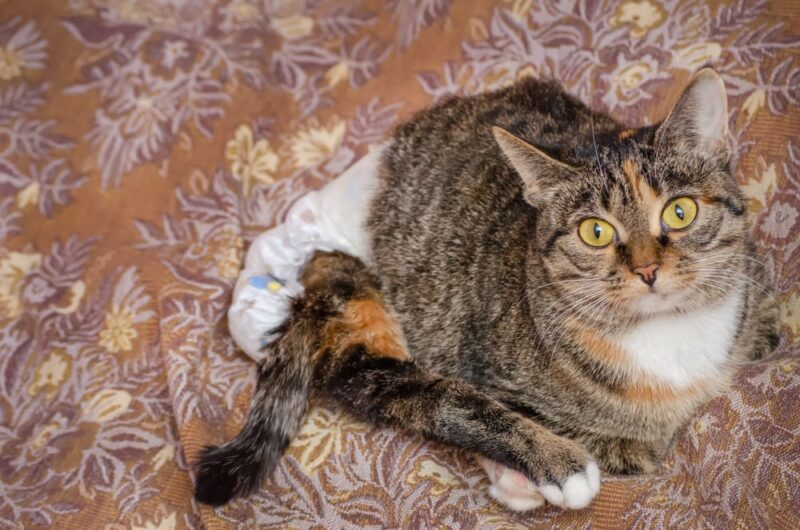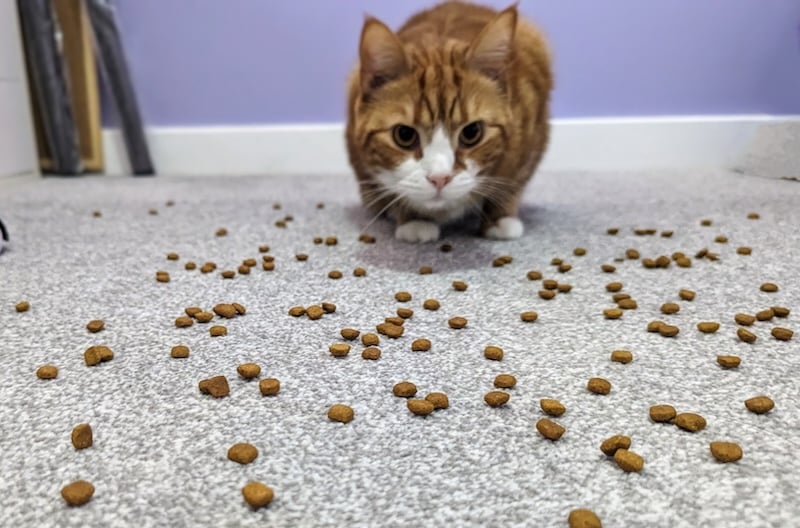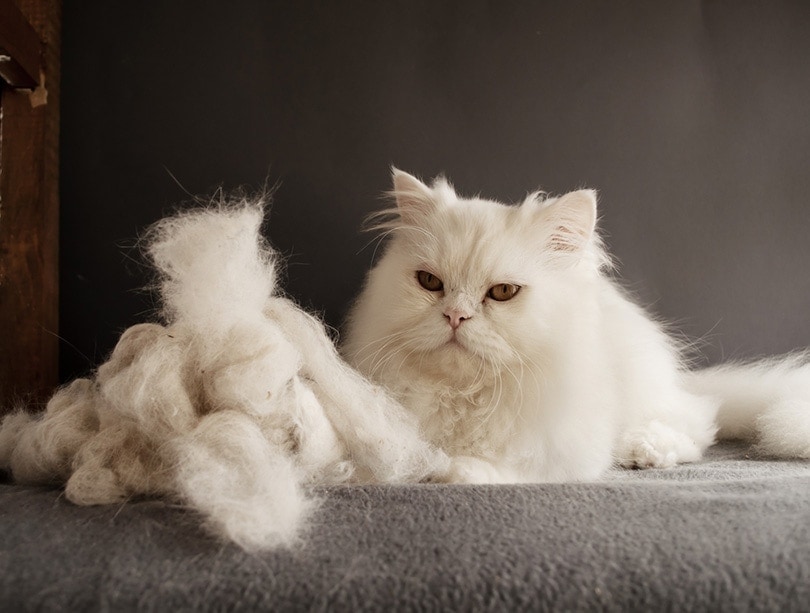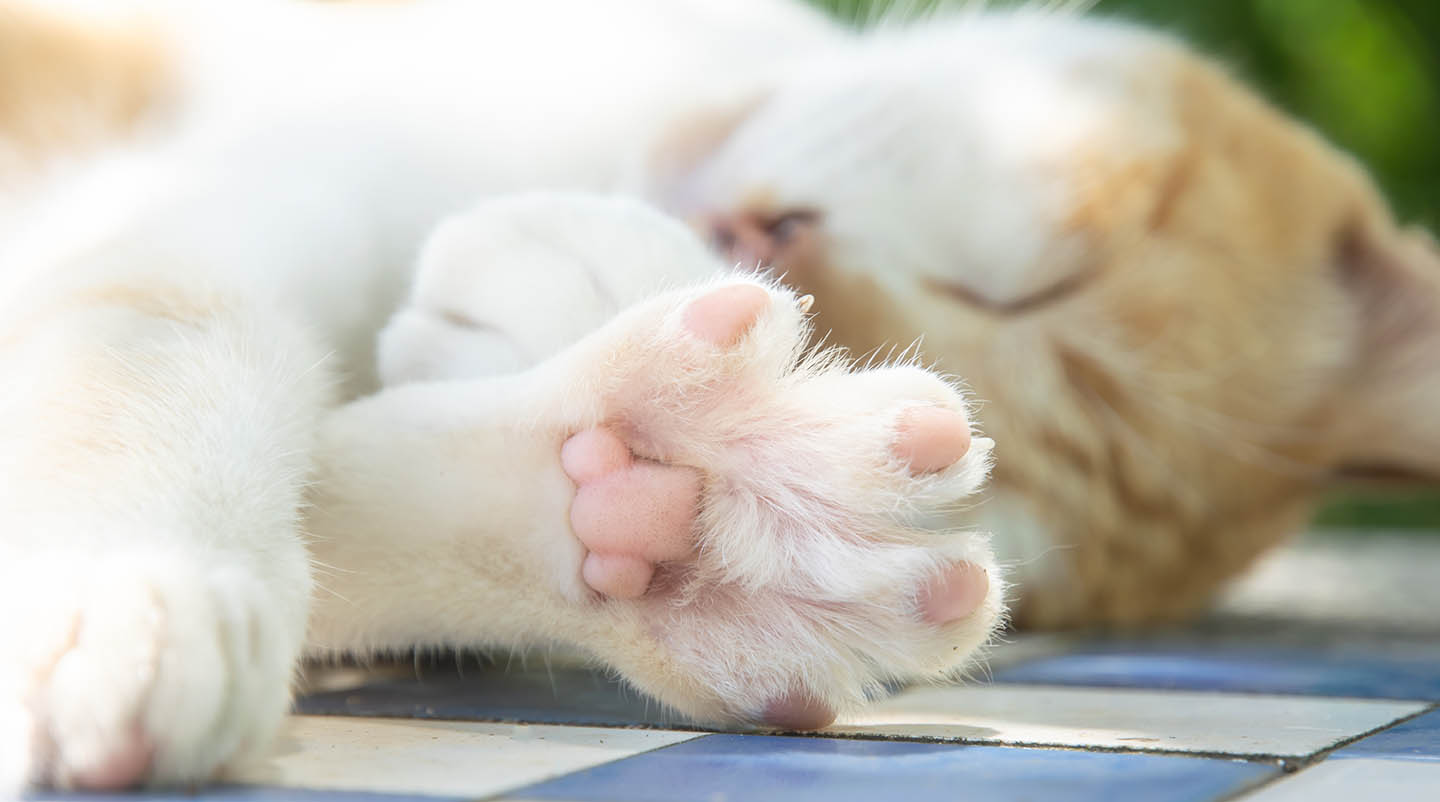If your cat’s head is tilted awkwardly backward, their limbs are stiff or weak, or they seem paralyzed, they likely have a health condition at the level of the spine.
Spinal cord injury in cats is called spinal trauma and can be caused by spinal fractures or tumors or be the result of a disease or significant injury (car accident, gunshot wound, etc.). As the spinal cord deteriorates, your cat may experience pain, paralysis, and/or respiratory failure.
Cats with hind legs or all legs paralyzed need assistance doing their daily activities. But don’t worry; even if your cat is paralyzed, they can live a happy and healthy life with your help.
Depending on the type of condition, temporary or permanent, your cat may need personal care during recovery or lifelong care if the paralysis is irreversible.

What Is Spinal Cord Injury?
The spinal cord is a component of the central nervous system, localized inside the vertebral canal. It is mainly responsible for the transmission of nerve signals from the brain to the rest of the body, which are essential for the proper performance of body movements and other related functions.
Spinal cord injury is damage to part of the spinal cord or the nerves that come into contact with it.1 Depending on the causative agent, in addition to the spinal cord, nearby tissues and bones can also be damaged.
It can lead to temporary or permanent damage. Depending on the severity of the injury, your cat may lose their mobility or function in different areas of the body. In some cases, the damage is severe and cats remain permanently paralyzed.
In other cases, treatments such as surgery, medication, and physical therapy can help with recovery.
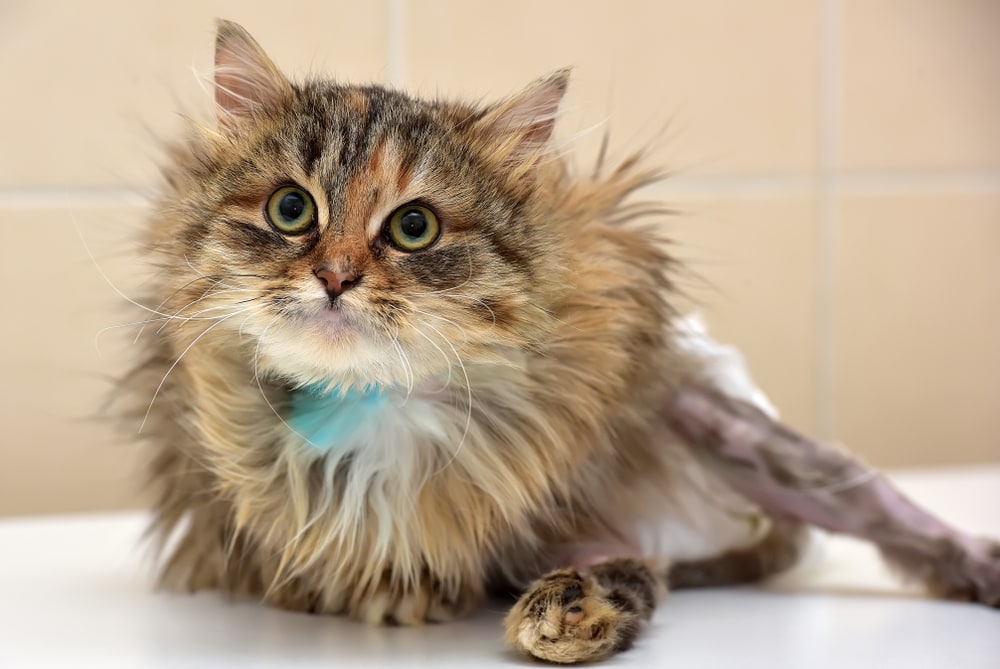
What Are the Signs of Spinal Injury in Cats?
Clinical signs of spinal injury in cats can occur suddenly or develop slowly over a long period of time, depending on the cause. But they usually set in suddenly, getting worse over time.
Spinal cord injuries in cats can be complete or incomplete. When the injury is complete, it means the spinal cord is no longer able to transmit nerve signals from and to the brain. When the injury is incomplete, it means the spinal cord can still receive and transmit nerve signals.
- Tetraplegia (the cat cannot move all four legs)
- Paraplegia (the cat can’t move the hind legs)
- Walking with the front legs while dragging the back legs
- Inability to urinate or unable to control urination and defecation
- Lameness
- Loss of balance (more commonly, unsteadiness on the back legs)
- Difficulty walking
- Difficulty standing up and/or sitting down
- Stiff or weak legs
- Slow walk
- Reluctance to move or play
- Pain
- Vocalization (excessive meowing)
- Loss of muscle mass
- Lethargy
- Limp tail
The prognosis is usually poor when the affected cat does not feel pain in the limbs located under the spine injury.
What Are the Causes of Spinal Injury in Cats?
There is no singular cause for spinal injuries in cats.2 There are multiple ones and include:
- Trauma to the vertebrae, intervertebral cartilages, or ligaments but also to the spinal cord
- Traumas can consist of fracture, dislocation, crushing, or compression of one or more vertebrae. The most common causes of these traumas are car accidents, high falls, and gunshot or bite wounds near or on the spinal cord. When there is trauma to the spinal cord, the damage is immediate.
- Non-traumatic injuries, such as arthritis, cancer, infections, inflammation, cartilage degeneration, or birth abnormalities (e.g., tailless Manx cats can develop spina bifida before birth)
- Damage to the spinal nerves
Your cat will need a complete neurological exam to determine the location and cause of the injury, regardless of whether your pet’s clinical signs occurred suddenly or over time.
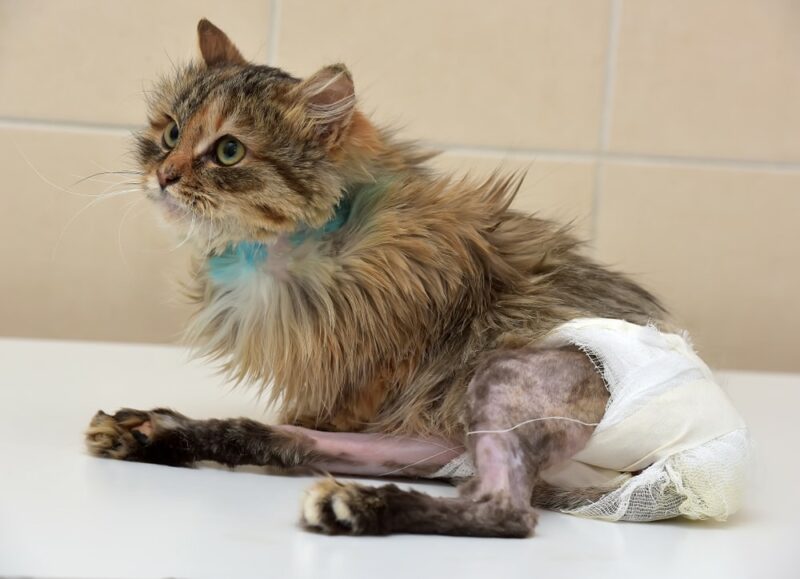
How Do I Care for a Cat With Spinal Injury?
Cats can make a full recovery or experience adverse effects for the rest of their lives, depending on how quickly the injury was diagnosed and treated, as well as its severity. For example, if your cat has injured their tail and caused damage to the spinal cord, your pet may lose the functions of their hind limbs and develop urinary and fecal incontinence because the tail contains many nerve roots.
The prognosis will be given by the veterinarian depending on the severity of the injury. Cases of minor trauma have a favorable prognosis, so there are high chances of recovery. When cat owners closely follow the indications and treatment prescribed by the veterinarian, their pets have a better chance of recovering and leading a normal life.
The prognosis is usually unfavorable/poor when cats lose their senses below the injury area. Paralyzed cats should rest on soft bedding to avoid injury and prevent the formation of painful bedsores. They must be checked and repositioned once every 3–4 hours. If they urinated and defecated in their bed, clean them with warm water and soap or baby wipes, and change the bedding.
For cats with paralysis or those that have undergone spinal surgery, physical therapy will help keep their muscles flexible and their joints healthy. In cases where the paralysis is permanent and cannot be treated, the vet may recommend a wheelchair for your cat. Cats with wheelchairs adapt quickly and lead beautiful lives.
If your cat stops urinating and defecating due to the spinal injury, they must be helped to eliminate several times a day. If they suffer from urinary incontinence, placing the litter box next to them can help prevent unwanted accidents. In severe cases, when the injury cannot be treated and/or your cat’s quality of life is very poor, the veterinarian may recommend humane euthanasia.
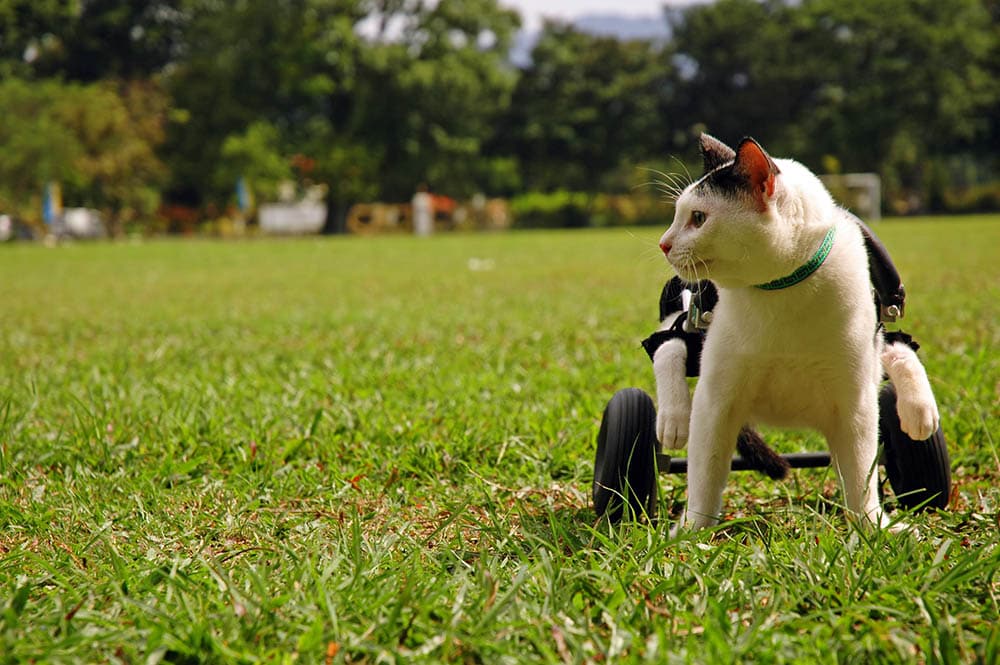

Frequently Asked Questions (FAQs)
How Long Does It Take for a Cat to Recover From a Spinal Injury?
Sometimes the recovery is quick, and other times, it takes weeks or even months. It depends on the severity of the injury and how quickly it was diagnosed and the treatment started. In general, cats with mild neurological signs recover in 4–6 weeks if they are kept in a cage to limit their movements. In cases with severe neurological signs, surgical intervention is necessary. Cats that lose their ability to feel stimuli have a poor prognosis and therefore, lower chances for recovery.
Should You Put Down a Paralyzed Cat?
Many cat owners think that if their pet is paralyzed (partially or totally), it is a death sentence. But that’s not true. Both you and your cat will simply need time to get used to the new living conditions. When the paralysis is permanent, the veterinarian may recommend a wheelchair for your cat.
It’s in severe cases when the treatment is ineffective and your cat’s quality of life is extremely poor, that the vet may recommend euthanasia.
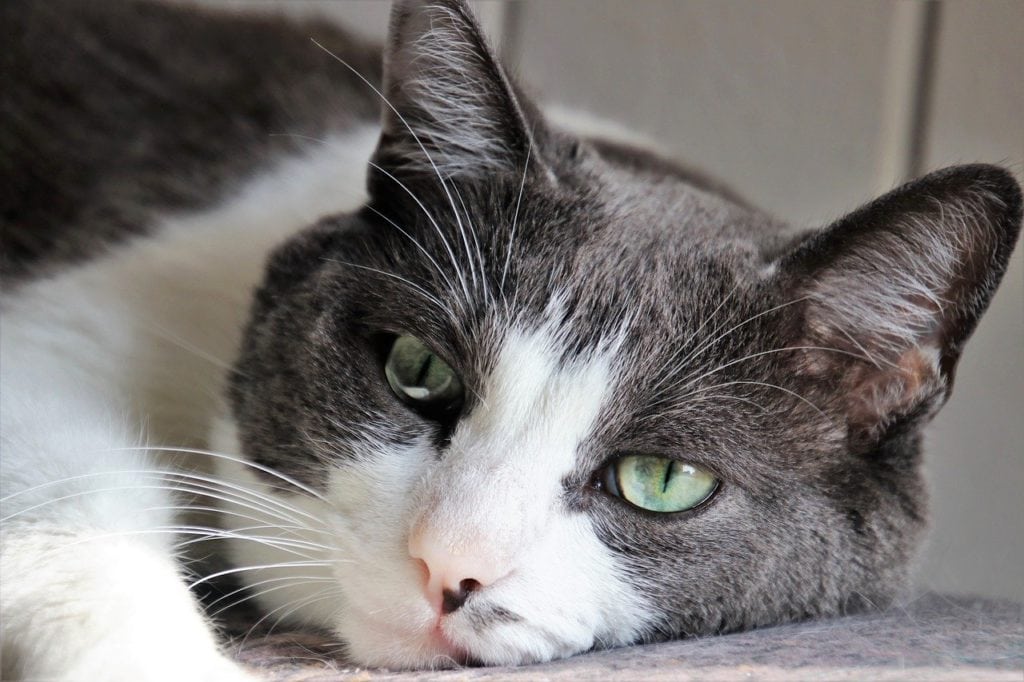

Conclusion
Spinal cord injuries in cats occur for many reasons, the most common being trauma (car accidents, falls from a height, or bite wounds). Clinical signs usually include the inability to move their legs, urinary incontinence, the inability to stand up or sit down, or stiff or weak legs. Spinal cord injuries are not a death sentence. Only in severe cases, when there is no treatment and your cat’s quality of life is poor, the veterinarian may recommend euthanasia.
Featured Image Credit: ERIK Miheyeu, Shutterstock

